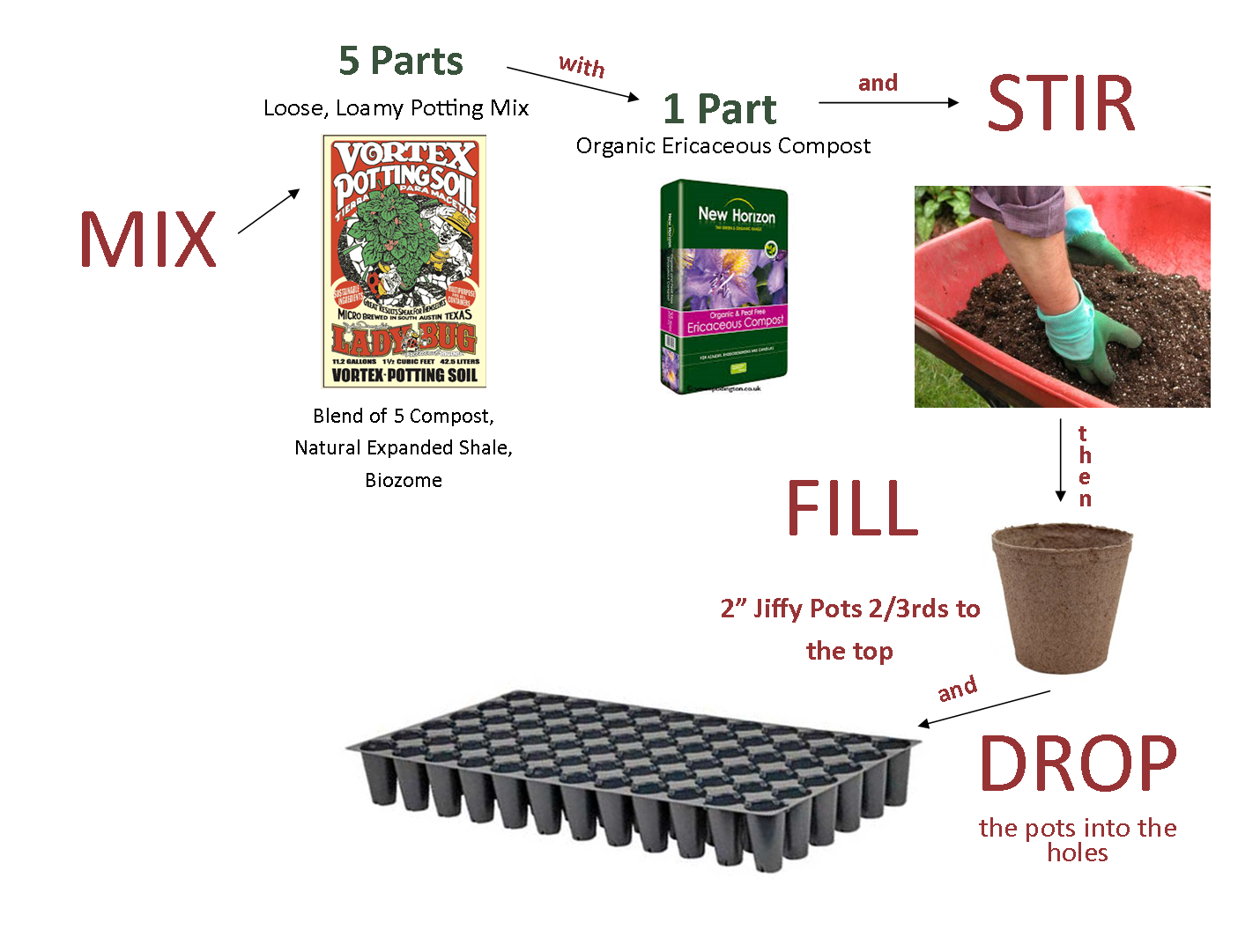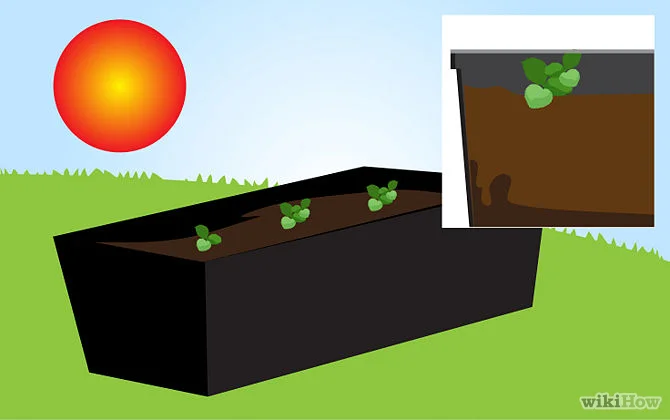Imagine, each morning from spring to summer, shuffling in your slippers to your berry patch to pick a bowl of bright red, organically grown, delicious strawberries.
Whether you live in a high-rise condominium in New York or a multi-acre farm in Idaho, you can enjoy the rewards of growing berries steps from your kitchen (or even in your kitchen!). We will teach you how to do it...
Choose Your Berries Wisely
There are actually four different categories of strawberries, grouped by when they bear their fruit.
- June-bearing varieties yield one large crop that ripens all at once in either late spring or early summer, depending on the climate. These varieties are not the best choice if what you desire is a long season of fresh berries.
- Everbearing varieties produce two crops a year - one in June and a smaller crop in late Summer. Again, not exactly what we are looking for. These berries do have a bonus for gardeners in warmer climates, however, because they are some of the most heat-tolerant types.
- Alpine or Woodland berries are low-maintenance plants that produce tiny, intensely fragrant fruits from late spring until fall. These are a great choice if you don't mind the small size of the berry.
- Day-neutrals produce flushes of berries from spring until early fall. This nearly non-stop harvest, and the small to medium size fruit makes day-neutral varieties perfectly suited for our purposes. Tristar, Tribute, Everest, and Seascape are good day-neutral varieties for cold-climate gardeners. Eversweet is a good choice for those in warm to hot climates. Eversweet plants will keep bearing fruit in temps of 100 degrees or higher! Tarpan, Gasana, and Elan varieties are great day-neutrals for any climate.
Seeds or Plants?
Strawberries can be grown from seeds or from small plants, sometimes called plugs. Both options have advantages.
Growing from seed:
- Allows you to get a head start on the growing season - if you start your seeds in the first few weeks of fall (which is now) your plants will be mature and much more ready to start churning out those delicious berries when spring rolls around;
- Gives you a much greater selection of the different varieties of strawberries - nurseries often have a limited selection of plants;
- Allows you to start growing when it is best for you - not when nurseries start stocking the plants;
- Can be a more economical approach.
Buying plants or plugs:
- Is quicker than growing from seed;
- Means less work/maintenance for you.
Starting From Seed
1. Make a potting mix
Mixing 5 parts of a good quality loose and loamy potting mix with 1 part organic ericaceous compost and loosely stuff 2" Jiffy Pots about two-thirds full. And place into a Seeding Propagation Tray.
2. Water the soil mix thoroughly
Then make a hole 1/4" deep in the soil and place two seeds in each hole.
The seeds are small so you may choose to use tweezers to take the seeds from the package to the soil.
3. Cover the seeds
Tamp down the soil over each hole taking care not to push so hard that you cause the soil to compact, making it difficult for the seeds to emerge.
4. Humidity and warmth
If you are germinating your seeds indoors (recommended), it is helpful to have a water-proof Plant & Propagation Tray to put under the Seeding Propagation Tray to catch run-off water.
Place a plastic dome (seen in the image to the left) over your seeding tray to trap humidity and warmth. Alternatively, you can use plastic wrap. Just be sure the cover you use is clear to allow light through.
5. Find a sunny location
Place the tray in a sunny location (close to a south-facing window) indoors. Be sure to monitor for cold drafts in the cold winter months. You may need to place a propagating heating pad under the tray to ensure your soil stays the optimal temperature (68 to 72 degrees).
6. Water the seeds & remove the plastic after the seedlings reach the top
Water enough to keep the soil moist, but not soggy. Strawberries are particularly picky about soggy roots.
After the seedlings emerge (20-30 days), remove the plastic dome. You will need to check the soil frequently with the cover removed to prevent it from drying out.
7. Thin out the seedlings
When a seed first emerges from the soil it has a set of two leaves called cotyledons. These are actually part of the seed and are not true leaves. True leaves will look much different, more like what the plant's leaves look like when mature.
After the seeds have sprouted and have at least two sets of true leaves you can thin out the smallest seedling, leaving the strongest with the best chance of survival.
Now you are ready to transplant!
Choosing the Forever Home
Whether you started your plants from seed or purchased them from a nursery, you will need to transplant your plants into a permanent or forever home. Besides the obvious choice of growing in the traditional 'in-ground' or 'raised bed' methods, which, not all of us have the option to do, everyone has a few different options that are possible:
Herb, Vegetable and Fruit Garden Growing Vertically in the Kitchen of this Home
Option 1: Vertical Gardens
Allow you to grow strawberries (and many other plants) in places you could not have even imagined before the days of this technology - like the framed herb & veggie garden growing on the walls in this kitchen to the left.
This method of gardening is especially advantageous for people living in apartments or other homes with small to no outdoor space and to people living in climates adverse to extended growing seasons. Gardening indoors frees you of the restrictions of natural seasons and conditions.
If you would like to grow your strawberries on the wall of your home (indoor or out), we have several affordable options starting at just $26.99.
Option 2: Container Gardening
Strawberries are the perfect plant for container gardening because they have very shallow roots. There are many different types of containers you can choose from. Deciding when you want to plant your strawberries is the first step in the decision making process.
If you are growing from seed and starting in the fall, you will want to choose a container which can be easily moved indoors. This includes providing a method for catching run-off water from making a mess inside your house. Something as simple as a saucer and a plant caddy on casters (wheels) will do the trick.
If you are starting with transplants (plants from the nursery), you can choose just about any container with at least an 18" diameter provided it has multiple drainage holes. Strawberries can grow and produce very successfully provided they have good quality soil with excellent drainage and plenty of light.
**TIP** Place broken terracotta or ceramics at the bas of the container OR large pebbles/smal rocks. This will ensure good drainage.
How to Grow in Containers...the Right Way
1. Start with Excellent Soil
- Strawberries need soil with a pH between 5.3 and 6.5. If I lost you there, don't worry. Just follow this formula and you will end up with the perfect strawberry growing potting mix:
- First, if you are using a hanging basket, line the basket with sphagnum moss. If you are using a pot or planter, put a layer of pebbles or broken terracotta pieces at the bottom of the pot.
- Combine the following ingredients to create your potting mix:
- Three parts loose, loamy, excellent quality potting mix
- One part coco coir or peat moss if you can't find the coir
- One handful of ericaceous compost
- Three parts loose, loamy, excellent quality potting mix
- Fill the pot two-thirds full with potting mix
2. Water the soil until the water starts to drain from the bottom of the pot.
Then make five or six mounds of soil about 1" tall. Space the mounds at least 6" apart so that the runners (the baby plants that sprout from stems called runners from the 'mother' plant) have room to spread. The mounds should be about 3" wide.
3. Gently remove the plants from the peat pots or nursery pots and soak the roots in a bucket of clean, room temperature water.
Strawberries do not like for their roots to be disturbed, so take care during this process. You can soak the roots for up to an hour to be sure they have absorbed enough moisture to keep them hydrated during the initial transplanting stages.
4. Move the plants into the prepared soil mounds
Remove the plants from the soaking water and set one plant on top of each soil mound that you prepared. Arrange the roots so that they extend down the sides of the mounds.
Fill the pot with more of your potting mix, bringing the soil to the level of the plant's crown. The stems emerge from the crown, so do not bury the crown under the soil.
5. Water the plants thoroughly
Continue to gently water until the pot begins to drain. Add more soil if necessary, as the thorough watering will often collapse air pockets and reduce the soil level.
Use a watering can with a sprinkler attachment to avoid disturbing or pushing the soil out of the pot.
Maintain Regular Care
Temperature
Strawberries can overwinter well in mild climate areas, but they will need protection from heavy frost in areas with cold and snowy winters.
Light
Bright, direct light is required. Inside, this would mean placing your plant two to five feet from a south facing window. You can always supplement your indoor lighting with artificial full spectrum grow lighting.
Water
Newly planted Strawberries must be watered regularly. All Strawberry plants will need regular watering during dry weather. It is important to keep water off the fruit because this will cause the fruit to rot. When watering, aim for the crown of the plant and use a very low pressure or slow stream of water.
Feeding/Fertilizing
Strawberries require a fair amount of nitrogen. Fish emulsion, blood meal, and cottonseed meal should be given to the plant biweekly in the growing seasons and stopped for three or four months in the winter. Mulching is essential to keep the fruit from coming in contact with the soil. Polythene sheeting can be used for this purpose. Just place on top of the soil and under the leaves.
Harvesting
Inspect the plants daily for ripe fruit. This should be done in the morning and when the fruit is dry. Cut the stalk rather than tugging the fruit away and do not remove the plugs or cores before washing or storing.
Image Credits:
First photo: Suthi Picotte; WikiHow Images: WikiHow - "How To Grow Strawberries"




















